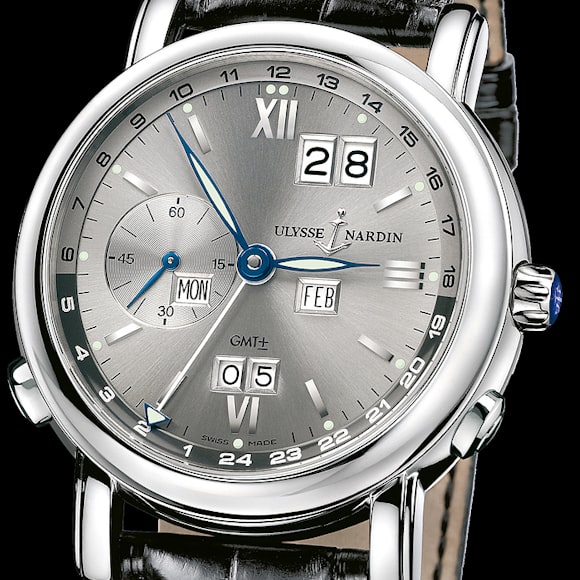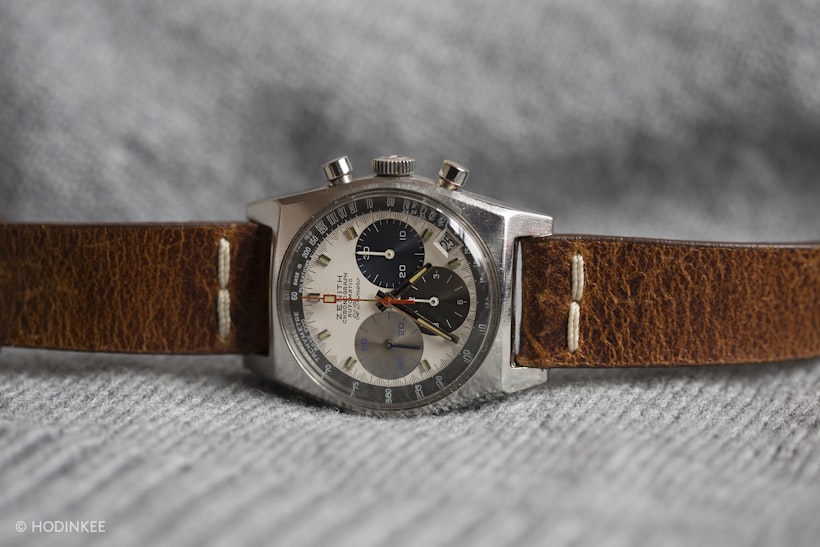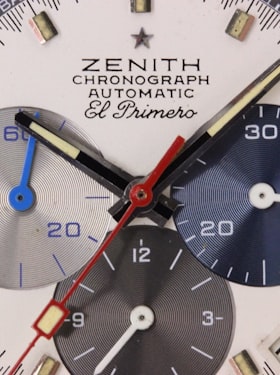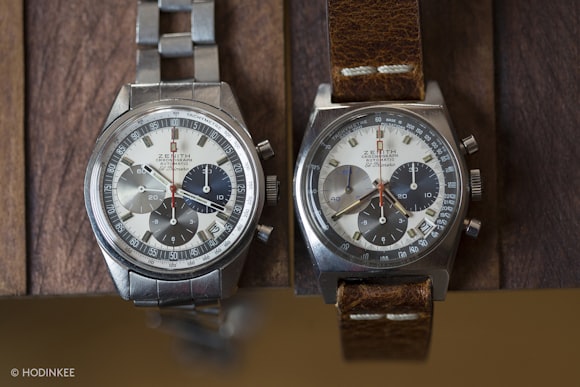Watches, like people, are born with certain traits, but are also, and often, the most interesting when they have led interesting lives. The 20th century was one in which technology innovations made it possible to explore the world around us in ways impossible in previous centuries and of course, watches were an essential part of any explorer's kit. Here are five that helped their owners make history, and which have disappeared from view – and whose fate we'd love to know.
Lindbergh's Longines Lindbergh Hour Angle

It seems odd, but a Longines Lindbergh Hour Angle watch actually owned and used by Charles Lindbergh seems elusive. The watch was developed by Lindbergh to aid in calculating the hour angle – the angular distance of a celestial body from Greenwich, an essential part of aerial navigation – from the Weems Second-Setting watch. The use of more sophisticated navigation methods, as well as highly specialized charts for celestial objects, eventually made them obsolete. The Smithsonian Institute does have a vintage Hour Angle watch in its collection but it doesn't look like it was Lindbergh's – the watch was donated by the Stanley King family, and Stanley King was a collector of Lindbergh memorabilia – souvenir objects like commemorative plates – not Lindbergh's personal effects. It would seem to be a foregone conclusion that Lindbergh must have owned an Hour Angle watch – after all, he designed the darned thing – but where it might be, we've been unable to determine.
Buzz Aldrin's Speedmaster
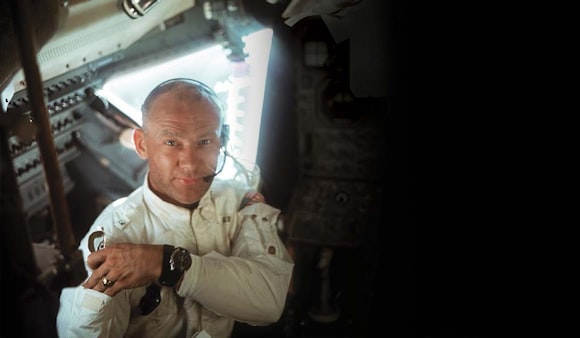
This is probably the most famous missing explorer's watch – the Buzz Aldrin Speedmaster. The story is well known: Aldrin's Speedmaster was actually worn on the lunar surface (Neil Armstrong's was left in the LEM/Lunar Excursion Module) as a replacement mission timer when the LEM's cockpit mission timer failed. It was supposed to have ended up at the Smithsonian Institute, but vanished somewhere in transit and to this day has eluded all attempts at detection and recovery (and people have tried).
Jacques Cousteau's Blancpain Fifty Fathoms

This is another odd one. The Blancpain Fifty Fathoms was a pioneering watch: one of the first true modern watches designed for SCUBA diving, with a rotating timing bezel and the general look and feel we now instinctively associate with dive watches. Originally designed for the French "combat swimmers" by Captain Robert Maloubier and Lt. Claude Riffaud, it was famously worn by Jacques-Yves Cousteau in the Louis Malle film, The Silent World, in 1957. Blancpain has a number of vintage Fifty Fathoms watches in its museum collection, but the one actually worn by Cousteau doesn't seem to be there, and we can't help but wonder where it ended up.
Scott Carpenter's Breitling Navitimer
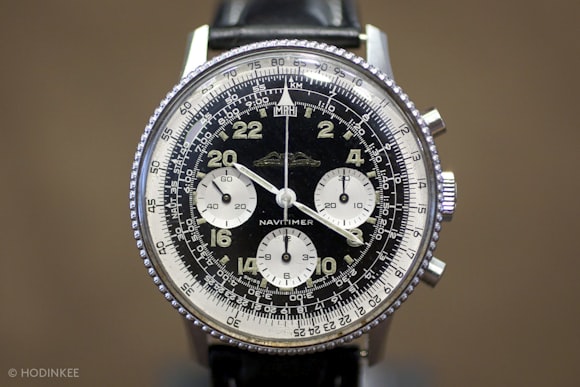
This is another famous one. Scott Carpenter was one of the "Mercury 7" astronauts and famously wore a Breitling Navitimer for his flight aboard the Aurora 7 Mercury spacecraft in 1962. It was the first wristwatch ever used by an American astronaut in space and it would probably be not only historically interesting, but pretty valuable, were its location known. At some point during splashdown and recovery, the watch got wet, and Carpenter sent it in to Breitling for service. Breitling gave Carpenter a replacement watch: the Cosmonaute, which was inspired by Carpenter's suggestion that for space flight, a watch with a 24 hour scale would be more useful. However, his original Navitimer went missing, and whether it was accidentally discarded, or is still sitting somewhere in a forgotten cabinet, box, or closet at Breitling, no one seems to know.
Santos-Dumont's Cartier Santos-Dumont

Another great story to which we'd love to be able to attach a watch. The Cartier Santos-Dumont watch supposedly came about as a result of pioneering aviator Alberto Santos-Dumont's complaint to his friend Louis Cartier that a pocket watch was impractical when piloting an aircraft. That seems indisputably true, and it also is indisputably true that there would have been very little reason to name the watch after Santos-Dumont if Santos-Dumont had not had some pretty close relationship to the genesis of the watch. The Santos-Dumont was originally retailed by Cartier in 1911, and according to Cartier the first prototype was made for Santos-Dumont in 1904 but no one knows what happened to it. Santos-Dumont's later life was difficult due to ill health; eventually he left Paris and returned to his native Brazil. It seems likely that if the watch survives, it's somewhere in São Paulo, where, suffering from illness and severe depression, he committed suicide in 1932.
Thor Hyderdahl's Eterna
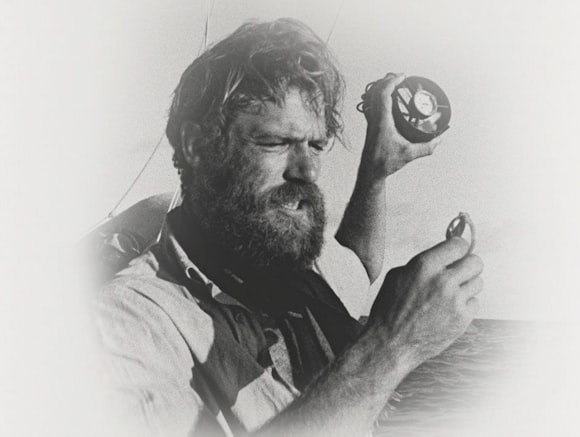
This one should be marked "provisional" because although it's widely been repeated that the famous ethnographer Thor Heyerdahl wore an Eterna watch on his 1947 journey across the Pacific, on a balsa-wood raft, it's never been proven conclusively that that was in fact the case. The journey was undertaken as an attempt to demonstrate the plausibility of Heyerdahl's theory that Polynesia had been colonized by travelers from South America. He would later go on to attempt to prove a similar theory about the colonization of South America by Africans, by sailing a papyrus reed boat – the Ra – across the Atlantic. While both voyages were successful, his theories remain controversial (modern DNA studies, however, suggest that he may have been onto something). The Eterna Kontiki watch came out in 1958, and again, it seems unlikely that Eterna would have given the watch that name, and used Heyerdahl's expeditions in its marketing, were the connection not legitimate. However, we've been unable to find any direct evidence that Heyerdahl's watch was an Eterna – or any record of its fate.
Any readers with any info on any of these, don't hesitate to let us know in the comments!
Check out our (very) in-depth coverage of the Lindbergh Hour Angle here. Our coverage of the 2013 50 Fathoms Tribute is here. And if you'd like to see some more lost treasures, check out our coverage of 12 Of The Greatest Missing Watches Of All Time.
Don't have the HODINKEE App yet? Get years of amazing watch content plus new stories, breaking news, and access to great new features like HODINKEE Live, free on iOS.










